In an era where digital innovation meets creative expression, AI-generated art has captivated enthusiasts and professionals alike. Image generators combine digital prowess and artistic flair to redefine the decor of offices, corporate spaces, and homes.
As with any groundbreaking technology, it is essential to understand both its capabilities and the ethical considerations it entails. Here is a comprehensive guide on the do’s and don’ts of creating and printing AI-generated art, ensuring that you harness its potential responsibly and effectively.
In this post you’ll find:
What is AI Art?
AI art is a form of digital art that has been created or enhanced with AI tools or generators. Artificial intelligence programs like DALL-E 3 and Midjourney respond to textual prompts to create images that range from abstract expressions to photorealistic scenes.
These platforms analyze styles, themes, and compositions of established artworks and leverage vast databases of existing images to synthesize new images.
Using AI image generators, artists can create surreal landscapes that blend elements from different ecosystems into a single, cohesive image, or they can produce portraits that combine various historical art styles, like combining the intricate details of Renaissance art with the bold color palettes of Impressionism.
This innovative approach allows for limitless creative exploration, pushing the boundaries of conventional art.

Key Image Generation Platforms
- Midjourney: Known for generating photorealistic art, Midjourney requires a subscription for usage, with additional plans for larger enterprises. The artwork generated here can be owned, subject to the terms of service which emphasize compliance with copyright laws.
- DALL-E 3: A creation of OpenAI, this tool is adept at creating detailed images based on complex prompts. While affordable, with images costing about 3 cents each, the artwork produced under standard conditions cannot be copyrighted, limiting exclusive commercial use.
The Do’s of AI Art
- Do Check Rights and Permissions: Ensure you have the rights to use, modify, and sell the AI-generated artwork. This includes understanding the terms of service of the AI platform you are using.
- Do Hone Your Prompting Skills: Learn to craft precise prompts for generating AI art. Experiment with styles and settings to align the images with your artistic vision.
- Do Consider the Medium: Different mediums can accentuate different aspects of your art. For instance, metal prints can bring out vibrant colors, while acrylic prints offer a modern look with profound depth.
- Do Upscale and Enhance Images: Use software like Photoshop to modify AI art, ensuring it meets your specific needs, and upscale images to improve resolution for printing.

The Don’ts of AI Art
- Don’t Ignore Copyright Laws: Avoid using copyrighted material as a base for your AI artwork without permission. This includes photos, other artworks, or proprietary models.
- Don’t Overlook the Artistry: While the technology is fascinating, remember that the creative input and choices you make are what truly personalize the art. Engage with the composition, colors, and elements actively.
- Don’t Misrepresent AI Art: Do not sell AI-generated artwork as entirely handmade or traditional art, as this can mislead consumers and undermine trust.
- Don’t Use Default Settings Only: Experiment with different AI settings or combine multiple outputs for a unique piece. Customization can set your work apart.
Printing Your AI Artwork
Once you’ve navigated the creation process, printing your AI art is the next step. Whether you aim to decorate a corporate office or a cozy café, understanding the printing process is crucial.
- File Preparation: Convert your artwork to high-resolution .TIF files, ideally at 300 DPI, to ensure high-quality prints.
- Choosing the Right Material: Consider the ambiance and utility of the space. Brushed metal aluminum prints offer a modern look and durability, while canvas prints provide a classic aesthetic that can complement any decor.
- Upscale AI art: If your image resolution is too low for your desired print size, use AI upscaling tools to enhance image quality without compromising the visual integrity.

Ethical Considerations and Controversy
AI art straddles a fine line between innovation and ethics. The generated artwork is not traditionally copyrighted, which places it in a quasi-public domain. This means while you can use the art for personal or commercial purposes, claiming exclusive rights over it can be legally and ethically problematic.
Can I sell AI generated art?
The key is to ensure that you have the right to use and sell the AI art prints, which often depends on the terms of the software or platform used to create it. Many AI art generators allow the commercial use of generated images, but it’s crucial to review the specific terms and conditions. Additionally, consider the ethical implications and transparency with potential buyers about the art’s AI origins.
Create Your Masterpiece
AI-generated art offers a unique blend of technology and creativity that can transform spaces at a fraction of the cost of traditional art. However, understanding the do’s and don’ts of using such technology is crucial to navigate the potential legal and ethical pitfalls.
Whether you’re an interior designer, a business owner, or an art enthusiast, AI art can provide limitless possibilities as long as it’s used wisely and responsibly.
By following these guidelines and embracing the innovative potential of AI, you can explore a new frontier in art creation and presentation, enhancing any space with creative art prints.
* The images featured in this blog were created with DALL-E 3 Image Generator



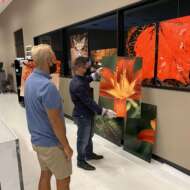
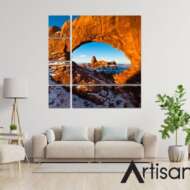
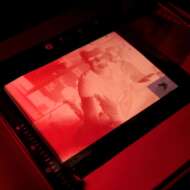
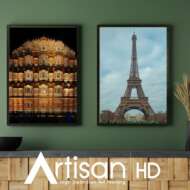
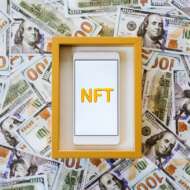


Leave A Comment